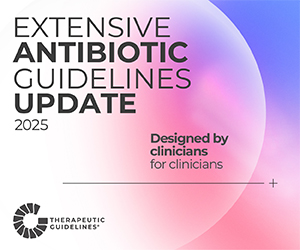The global crisis of gender-based violence is inseparable from occupational violence and aggression (OVA) experienced by the healthcare workforce.
As most of the healthcare workforce are nurses, midwives, and care workers, the majority of whom are women, there are undeniable gender-based patterns inherent in both linked phenomena. Women face greater risks of violence and aggression in the wider community, with female healthcare workers also facing higher risks of OVA at work.
OVA is characterised by abuse, threats, and assault at work. It can include aggressive and threatening gestures, verbal abuse, intimidating behaviour, and physical and sexual assault and can be catastrophic for those who experience it in the workplace and beyond.
Estimates suggest that almost three quarters of nurses have experienced some kind of OVA in the past year, with close to a quarter experiencing OVA on a weekly or daily basis.1
Most experience nonphysical violence such as verbal abuse or threats (67%) while physical violence accounts for an estimated 36% of OVA, with around 40% attributed to bullying and 25% for sexual harassment.2 The most frequent perpetrators of OVA, particularly that which includes physical violence, are male patients, visitors, or parents of paediatric patients.3
Beyond the acute physical and/or psychosocial harm caused by OVA, healthcare staff experiences of violence and/or aggression can lead to many negative outcomes including poor mental health such as post-traumatic stress disorder and depression, burnout and absenteeism, sleep disturbances, and impaired jobs performance including poorer quality of clinical care.4,5 It is likely, however, that reported rates of OVA substantially underestimate the real extent and severity of OVA due to barriers in reporting. Barriers to reporting include shame and fear of further violence.6 One major challenge is that reporting and support systems seldom go far enough, with many nurses and midwives having little trust that substantial action will follow a report to employers. Alarmingly, OVA is so prevalent that to many it has simply become an expected, if unfortunate, part of the job.7
OVA estimates do not capture women’s experiences of violence outside of work. One in three women has experienced physical or sexual violence since the age of 15 by someone known to them, and one woman is murdered by a current or former partner every week. This means that nurses, midwives, and care workers are very likely to experience OVA at work, care for patients and clients who have experienced violence at home or in the community, and potentially be victim-survivors themselves.
Like gender-based violence, preventing OVA is complex and challenging and it must be achieved. In terms of OVA, many interventions have been implemented, however, the increasing prevalence of violence and aggression highlights that genuine and sustained action is urgently required. Without preventing OVA and supporting women in the health workforce, the broader and linked issue of gender-based violence cannot be addressed. This is because the healthcare workforce is itself critical to fighting gender-based violence despite the fact that many members are at risk or victim-survivors themselves. Key strategies include advocacy, supporting survivors, identifying and responding to warning signs, educating children and young people, and building more evidence and knowledge. Further, as the perpetrators of gender-based violence and OVA are most frequently men, men must call out this scourge whenever they can and proactively prevent and combat it. Education and investment are needed to raise public awareness of the issues and push governments to provide support in the form of funding, policy, legislation, and real-world reforms including addressing embedded socioeconomic inequities to protect women and girls from gender-based violence and OVA.
References
1. Shea T, Sheehan C, Donohue R, Cooper B, De Cieri H. Occupational Violence and Aggression Experienced by Nursing and Caring Professionals. J Nurs Scholarsh. 2017;49(2): 236-43.
2. Spector PE, Zhou ZE, Che XX. Nurse exposure to physical and nonphysical violence, bullying, and sexual harassment: a quantitative review. Int J Nurs Stud. 2014;51(1): 72-84.
3. Hyland S, Watts J, Fry M. Rates of workplace aggression in the emergency department and nurses’ perceptions of this challenging behaviour: A multimethod study. Australa emerg nurs J. 2016;19(3): 143-8.
4. Mento C, Silvestri MC, Bruno A, et al. Workplace violence against healthcare professionals: A systematic review. Aggress Violent Behav. 2020;51:101381.
5. Grant SL, Hartanto S, Sivasubramaniam D, Heritage K. Occupational violence and aggression in urgent and critical care in rural health service settings: A systematic review of mixed studies. Health Soc Care Community. 2022;30(6):e3696-e715.
6. Dafny HA, Beccaria G. I do not even tell my partner: Nurses’ perceptions of verbal and physical violence against nurses working in a regional hospital. J Clin Nurs. 2020;29(17-18): 3336-48.
7.        Jackson D, Clare J, Mannix J. Who would want to be a nurse? Violence in the workplace – a factor in recruitment and retention. J Nurs Manag. 2002;10(1):13-20.
Authors:
Associate Professor Dr Micah DJ Peters and Jarrod Clarke are based in the ANMF National Policy Research Unit (Federal Office) in the Rosemary Bryant AO Research Centre, UniSA Clinical & Health Sciences, University of South Australia








